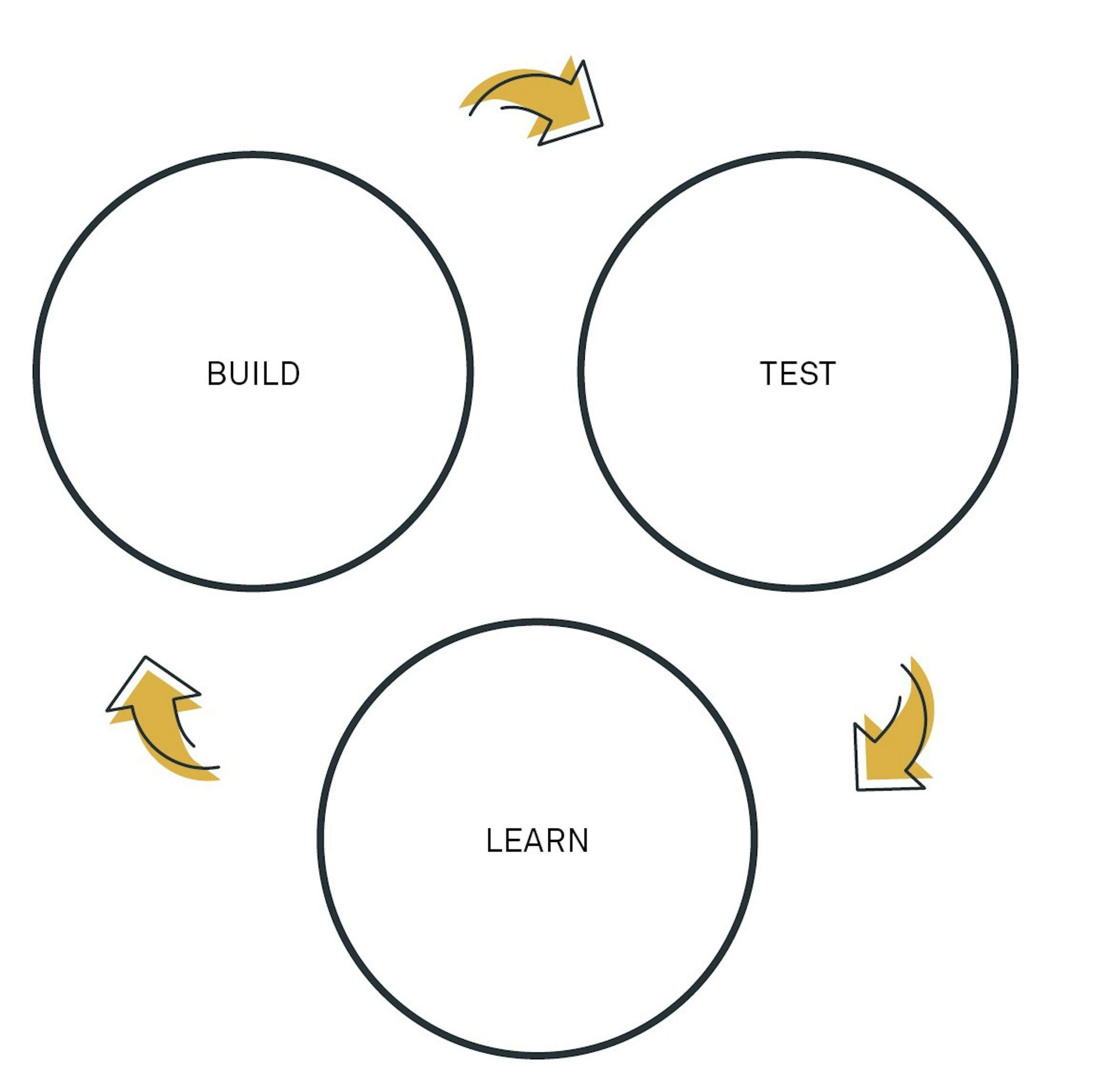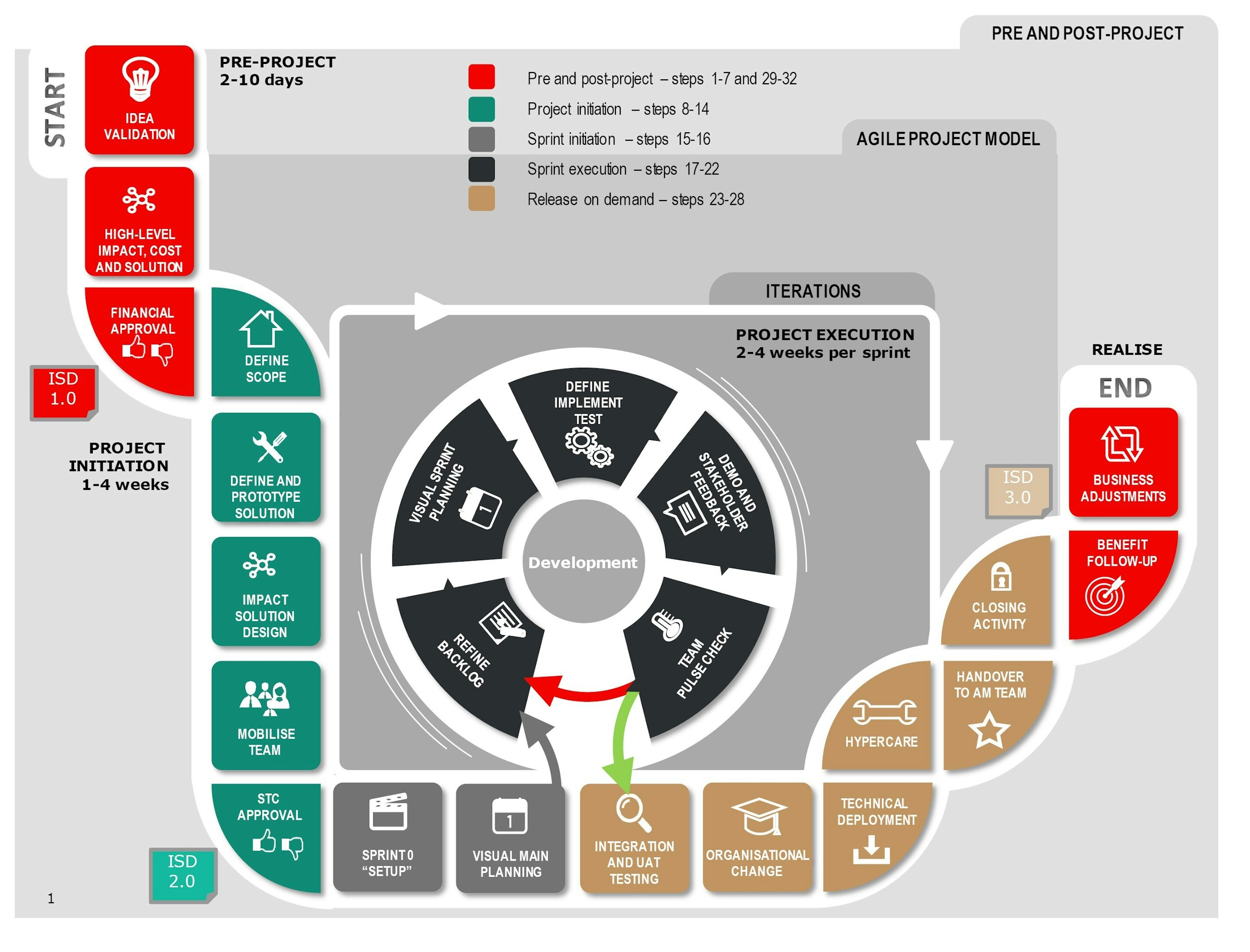Tryg and Implement Consulting Group
9 September 2019
Increasing the speed and benefits of your business development requires the will to experiment, the ability to learn fast and a lot of persistence.
We need more speed, if we want to stay ahead
Tryg’s development organisation worked like most other development organisations, but there was an increasing awareness that something needed to happen.
The world was calling for more. The market wanted more products, the customers wanted new solutions, the business called for more benefits, and everyone wanted more speed.
"We knew we had to change to get ahead of the market and deliver what our customers expected. We knew we needed speed, agility and to realise more benefits, faster. We couldn’t see the whole journey, so we experimented our way forward."
- Anne Nørklit Lønborg, VP, IT Development at Tryg
What worked in the past just wasn’t enough. The high growth ambition made this an even more urgent situation which needed to be tackled. The question was:
How might we speed up and secure benefits from product and service innovation to enable an increase of DKK 1bn in revenue from new products in 3 years?
Since the HOW was not clear, Tryg decided to take their own medicine and experiment their way forward. They did it to learn fast and to ensure that the change would emerge from engaged Tryg employees and be a cultural development instead of a big bang approach with a completely new setup.
The first steps involved identifying key business needs, defining the playing field, setting the initial ambition and then defining the hypothesis to be tested.
The results of the first experiment were highlighted in Tryg’s annual report
The first experiment – Tryghedspakken – is a new advantage programme that makes it easier to buy different kinds of insurance by bundling them into packages. The project is also the key part of Tryg’s ambition of increasing the number of products per customer by 10%. The experiment was built on three principles.
Experiment principles:
- Focus on benefits
- Be agile (roles, tools and mindset)
- Work together, visually, co-located with +50% resource allocation for the core team
The introduction of these principles was rapid and represented a large change. The change involved new methods and tools, but it mainly introduced new roles and new ways of working together.
One year after initiation, the results of the first experiments found their way to Tryg’s annual report: the number of customers with more than three products had increased by 5 percentage points.
Making it work on a large scale
The experiment – Tryghedspakken – provided important input to the transformation of the whole business. Other experiments showed that we could finish our projects in half the time and at much lower costs. All of them suggested that active product ownership was a prerequisite for speed, that innovation tools could improve and shorten idea testing, that project owner leadership and availability were important to align management with the team and secure direction and focus, so all of that was also included. All in all, it gave us an appetite for more.
In the end, the transformation of Tryg consisted of eight major elements.
Tryg’s transformation elements
- Pilots experimenting with new ways of working
- A clear change story with a big WHY
- A new project model joining innovation and benefits realisation with an agile engine
- A training programme for everyone involved in product and service development
- A playbook with the WHY, roles, project model, tools – everything
- Development of method ambassadors
- Engagement of stakeholders across the IT and business organisation
- Persistence, stamina and many adjustments to make the change stick
As with almost all change projects, a foundation for the change was laid by producing the deliverables such as the tools, templates and the game-based project model. And it was a way of bringing the vision to life in practical terms.
A large change in behaviour had to happen in order for Tryg to realise the benefits of the transformation and enable them to deliver on the growth ambition.
The effort that was needed to succeed in getting project managers, team members, business people and steering committee members to change behaviour became clear well into the transformation when the organisational impact of the first wave of experiments became clear.
Communicate the change story
A key element in the change effort was to clearly communicate why Tryg needed to change. This was followed up by efforts to enable people to change, partly by providing training but, more importantly, also by acknowledging that changing how product development is done will take time. So, patience and method experts actively guiding their colleagues is what will see the change through.
Frederik Søgaard, Director, Private Division at Tryg says: "We have created the foundation for delivering on our very ambitions sales target for new products and services."
Transformation through experiments – a new mindset and a new way of working
A continuous flow of benefit-driven experiments is important, but it is also important to remember that the new way of working is a new organisational mindset. Tryg is almost at the end of the initial transformation. The work on maintaining and expanding Agile at Tryg continues, and the new ways of working will enable Tryg to seize the opportunities to keep them one step ahead.







